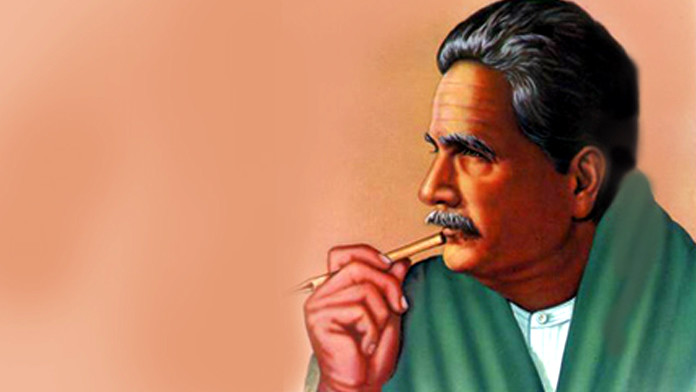By: ABBAS ALI
The third shareholder of the production of wealth is the factory owner or entrepreneur, who establishes and manages different branches of industry. In addition to other duties, he must decide what to produce, how much to produce, and at what price to sell. We have already stated that in the early stages of human civilization, there was no need for the owner or the entrepreneur. However, as the different forms of production of wealth became complex, machines were invented, and business expanded, it was necessitated that there must be a person who could lead the workers whose personal experience, managerial strength, and being well versed with the difficulties of business will help him solve the day-to-day complexities of the industry. You know that in the highest stages of civilization when industry experiences the highest development, it is not necessary for every individual who owns capital to act as an entrepreneur. To be an entrepreneur, in addition to other qualities, one must have a special kind of managerial power, a futuristic mindset, and the ability to shoulder the responsibilities, which generally is not the cup of every capitalist. Therefore, for providing capital, a moneylender or capitalist gets a particular reward, known as the rate of interest; similarly, to produce wealth, an entrepreneur gets a special reward for performing certain duties, including profit. Most economics researchers do not distinguish between entrepreneur and capitalist or moneylender, or we can say between profit and interest. Therefore, they consider profit as compensation for the use of capital. In addition, whatever an entrepreneur gets, they think of it as the wages for the management and supervision, etc. However, it is evident that for the production of wealth, capitalists and entrepreneurs perform different kinds of duties, and the share of the latter is not imaginary that it can be ignored; rather, calling it wages according to economics is incorrect as it will be cleared that every entrepreneur who has the qualities of an entrepreneur can also be a capitalist because he can get capital at a special rate of interest from others, especially in the present time when most of the commercial business is run based on goodwill.
However, every capitalist or moneylender cannot be an entrepreneur because the qualities required for manufacturing may not be present in every capitalist. Of course, if any capitalist or moneylender has manufacturing qualities, he can perform both duties and earn double profit. You know that the cost of production of a commodity means the expenses incurred on the manufacturing and taking a commodity up to the stage of buying and selling. The entrepreneur wants and hopes that the selling price or the commodity’s value should exceed its production cost. Therefore, profit is equal to the difference between the selling price and the cost of production of a commodity, provided it is more than the earlier. Because if the selling price is less than the cost of production, the entrepreneur will not earn a profit but incur a loss. The amount made during the trade of the goods by the entrepreneur is known as the profit. In the case of the trade of debts, the earning is not known as profit but as interest or the discount rate. In the broader sense, the meaning of profit is the same as stated. However, it should be remembered that those who have discussed the reality of profit have made a blunder. The interest rate means the particular amount paid for using capital for a specified period; similarly, the rate of profit means the particular amount received in a period. However, some researchers misunderstand that the period is not involved in determining the rate of profit, and the rate of profit depends upon the ratio between the amounts of profit and capital. But the opinion is wrong. Suppose, if at a certain rate of business, I invest capital worth Rs 100, and I get a profit of Rs 5 per day, then it is evident that the rate of profit per month would be Rs 150 per hundred. However, if the amount of profit is received in two months, the rate of profit would be Rs 75 per hundred per month and not Rs 150 per hundred. Therefore, the interest rate depends on not only the amount of capital but also the time period in which the profit is made. As the price of a commodity will be more than the cost of production, so will the rate of profit and vice versa. According to the same theory, if the period in which the total profit amount is short, the rate of profit will be higher and vice versa. For example, if against a certain amount of capital, the profit is Rs 50 in two months, then the rate of profit would be Rs 25 per month. However, if a profit of Rs 50 is earned over five months, the rate of profit would be Rs 10 per month. Therefore, the essential principle about the rate of profit is established: “Rate of profit has an inverse relationship with the cost of production and the period in which total amount of profit is rearmed.” By not understanding the trivial fact, some researchers have committed blunders. They understand that the amount of profit would only increase if wages are less, and the rate of profit would be less if it is more.
Therefore, in the opinion of these scholars, there is a contradiction between the profit and loss of the factory owners and the workers; in other words, the profit of one party implies the loss of the other party. However, as we have proved earlier, that period is greatly involved in the determination of the rate of profit. It means that the rate of profit increases if there is no change in the quantities of capital and profit and if the period in which a particular amount of profit is made shortens, or in other words, due to the quick sale of the commercial commodities. Expansion in that period decreases the rate of profit, no matter if the wages change or not. According to the same theory, it is also possible that wages may increase and the amount of profit may decrease; however, notwithstanding this, the rate of profit may increase. For example, suppose that capital equals one hundred pounds and the annual profit is twenty pounds. If the twenty-pound profit is made in one month, then obviously the rate of profit would be two hundred forty pounds per hundred annually. Suppose, due to such an increase in the rate of profit, the capitalist will pay five pounds as wages. In this case, the cost of production will be equal to one hundred five pounds, and the monthly profit will be approximately equal to 14.3 or 15 pounds per hundred. Therefore, the rate of profit will be equal to 167 pounds, and the amount of profit will be equal to 20 pounds per day. In other words, the rate of profit will be 7300 pounds per hundred annually. If, due to such an increase in the rate of profit, there is a 10-pound profit per day, it would mean that the rate of profit per day will be more than 4 per cent or more than 3318 annually per hundred. From this example, it is clear that due to the shortening of the period in which a particular amount of profit is earned, the wages and the rate of profit can increase simultaneously. However, the profit may decrease in aggregate terms. Therefore, there is no contradiction in the profit and loss of the workers, customers and entrepreneurs. In brief, the rate of profit depends upon the following factors:
All those causes reduce the cost of production of commercial goods and increase aggregate profit. It implies that the rate of profit also increases in the same ratio. However, the cost of production can decrease only in the case:
The skill and efficiency of the worker increase, but his wages remain the same.
Wages decrease, although the efficiency of labour and the price of food remain constant.
Foodstuff may become cheaper, but the workers get the same quantity they used to get earlier. Contrary to it, if due to lack of knowledge or destruction of fixed capital, e.g. machinery, etc., or due to the degeneration in the physical powers of the workers, the efficiency of labour decreases, or the wages of the worker may increase. Still, the foodstuff may not become cheaper, or the wages may remain constant, and the foodstuff may become dearer, then the profit will decrease. It means that the rate of profit will decrease with the same ratio, subject to the condition that there is no change in the period in which the total amount of the profit is made.
Because time is involved in determining the profit rate, if the period in which a certain quantity of profit is made decreases, then the rate of profit will increase.
The result of an increase in the profit is that the demand for the raw material which is used in the production of commercial goods increases; therefore, they become dearer, and people withdraw capital from other branches of business and start investing in the department of business where profits are comparatively higher. However, the situation can not last long because, due to a capital increase, the supply of goods will exceed their demand; therefore, prices will decrease, and the rate of profit will revert to the earlier position rather than, at certain times, come down below par.
To explain the nature of this, Walker writes that although Rent and Interest (described earlier) are vastly different, profit and rent are two types of the same gender. As the amount of rent depends on the extraordinary fertility and its particular location, similarly, the amount of profit also depends on the personal ability of the entrepreneur and his special managerial power and farsightedness. According to the same theory, as in the case of the determination of the former, the competitiveness of the rent of the different lands is very important; similarly, in determining the amount of the profit of other entrepreneurs, the competitiveness of their qualities is also very important. As there are some lands which pay less rent, similarly, there are some entrepreneurs who earn less profit. In every country, there are hundreds of such entrepreneurs who, in reality, lack such qualities essential for entrepreneurs, and their profit is hardly sufficient for their sustenance. Therefore, for the sake of economic argument, we can say that these entrepreneurs have no profit. From this explanation, regarding the reality of profit, two important results are drawn, which must be kept in mind:
Profit is not any part of the price of industrial goods; rather, it is the part of that wealth created with the help of personal intelligence and extraordinary managerial power. You must know that rent is not any part of the agricultural production; rather, it is the part of that wealth created due to extraordinary fertility and its particular location. The argument with the help of which it was proved correct for rent, the same argument can be used to prove that profit is not any part of the price of the industrial goods. The price of the industrial goods is determined by that part of the cost of production of the said goods, which has been produced in very inconvenient conditions. However, according to the economic principles, in the same market, homogeneous products have the same price during the same period; the entrepreneur who can produce goods at a lower cost of production than those entrepreneurs who work in very inconvenient conditions will receive more profit. Because the price of the goods is the same in both cases, and the cost of production is less in one case and more in the other.
According to the same theory, it is incorrect that the entrepreneur’s profit can increase only when the wages are low because of the wages that have to be paid by those entrepreneurs who earn profit due to their possession of the qualities of manufacturing. Those lacking such attributes have to pay the same wages, and economically, they do not make any profit or earn just nominal profit. The wage amount is the same in both cases; however, in one case, there is profit, no profit in the other, or there is just nominal profit. It means that acquiring profit results from the entrepreneur’s intelligence.
The rent for fertile lands is more than for infertile lands. Similarly, the profit of clever and witty entrepreneurs is more than that of those lacking such qualities. With the development of population, culture, and civilization low, quality lands need to be cultivated, and the rent for the fertile pieces of land keeps increasing. According to the same theory, as the number of such entrepreneurs who lack manufacturing qualities grows, so does the profit of those entrepreneurs who possess manufacturing qualities. Because due to the inefficiency of the entrepreneur, the cost of production increases.
In this context, it is pertinent to remember that the development of a country in terms of culture and civilization aligns with the fact that the rate of profit will have a decreasing propensity. The reason is that the number of inefficient entrepreneurs decreases in such countries. Therefore, the profit of those entrepreneurs who possess personal qualities is decreasing daily; the increase in their profit depends on the number of inefficient entrepreneurs. In addition, in such a country, common people become farsighted, accumulating more and more capital. Therefore, its supply increases and the rate of profit goes on decreasing. One cause of the rise in the rate of profit is the decrease in the supply of capital.
Additionally, due to the development of culture and civilization, the population increases, which causes low-quality lands to need to be brought under cultivation. Therefore, the cost of production and the price of foodstuffs rise, causing the rate of profit to decrease. However, you will say that if it is true, then why was there no major effect on the rate of profit in England due to the development of culture and civilization? The answer to the question is that a huge part of the English capital is invested in other countries, which means that the supply of capital in England is less. Due to the development of handicrafts in England and the cheapness of foodstuff exported from other countries, the labour cost does not increase. Therefore, there is a very small decrease in the rate of profit in England.
Because the worker generally envies the profit of the entrepreneur, therefore, keeping in view the benefit of the workers, some economists suggest that the craftsman is himself the labourer and entrepreneur; then, in the present system of craftsmanship, the need for the entrepreneur is not necessary. The profit goes into the entrepreneur’s pocket and will be received by the craftsman. This method is known as the principle of assistance, which has been discussed earlier.
Part – 4 Chapter – 3
Ilm-ul-Iqtisad
Maalik ya Karkhana ka Hisa Ya Munafa
The author can be reached at Abbas42@rediffmail.com






